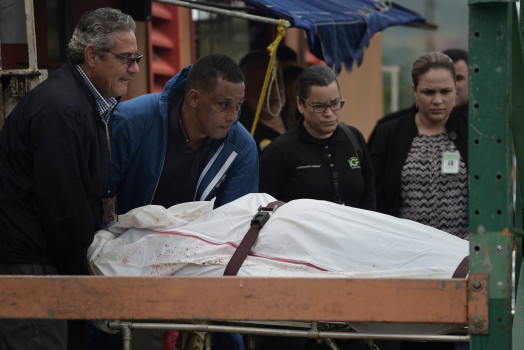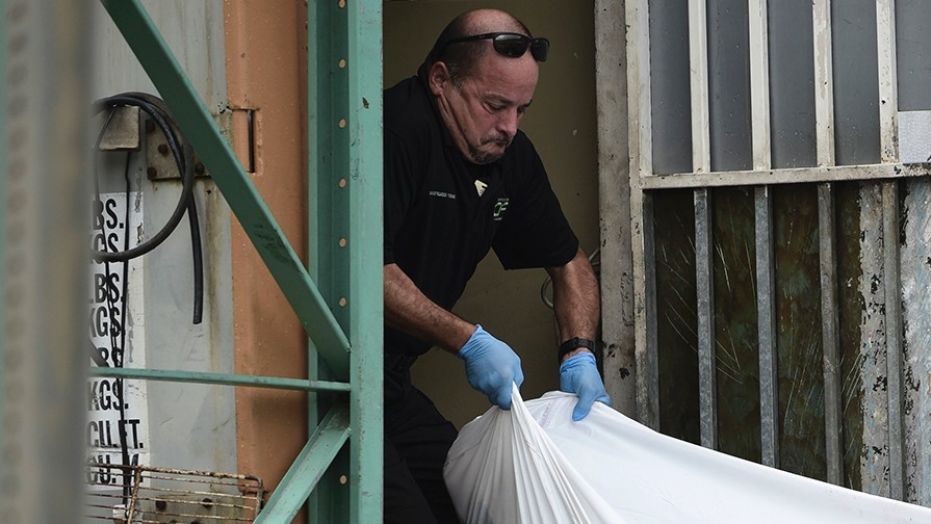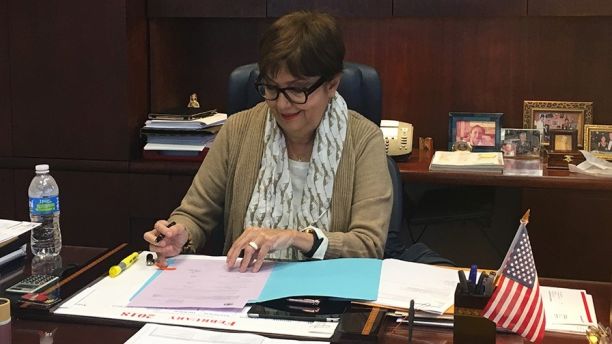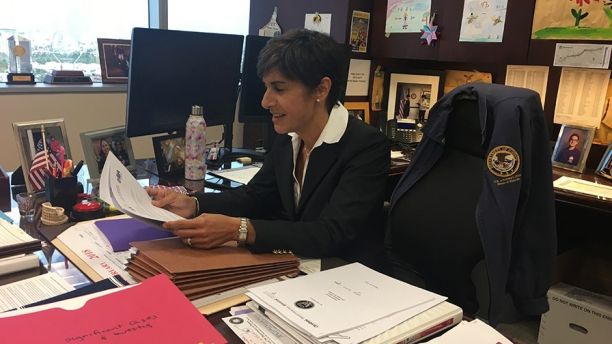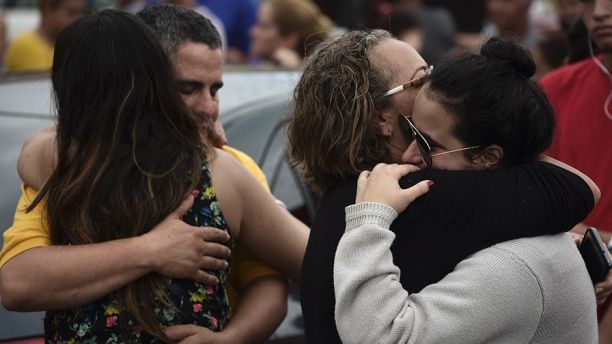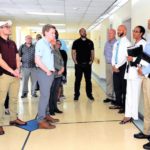‘OUT THE BOX’: Forensic worker moves a body at a San Juan crime scene in January, Puerto Rico’s deadliest month in recent years.
SAN JUAN — Just a half hour from the charming cobblestone streets of Old San Juan loom the boxy World War II-era public housing projects, now home to thousands of residents trapped in a post-Hurricane Maria dystopian nightmare of crime and corruption.
Police appear powerless to stem a spiraling murder rate, donations rarely seem to reach the public and the government’s answer is most often to blame Washington. Families that a year ago enjoyed the trappings of upper middle class huddle indoors with scant food and sporadic power, while armed young men roam the streets enforcing a brutal code borne of social breakdown.
“We are scared, of course, but this is where we live – this is our home now,” said 72-year-old Sebastian Mercado, who moved with his wife Ana to the suburb of Trujillo Alto when their home was destroyed and they were unable to flee the island.
Mercado, a former mathematics tutor, says most of his friends have migrated to the mainland – Florida and New York – to be with family. Now, he spends his days longing for the not-so-distant time when he played dominoes with friends, danced and enjoyed Sunday night dinners of Arroz con gandules – Puerto Rican rice with pigeon peas and pork.
“The boys walk around with big guns. The drugs. Too much violence.”
Fear dominates his nights.
“The boys walk around with big guns. The drugs. Too much violence,” he said, shaking his head.
The damage from Maria has led to job losses, foreclosures and an increase in murders, robberies and carjackings. The increasingly vicious nature of attacks adds to the climate of fear.
On Feb. 4, police officers arrested Adriel Carrasquillo-Carmona after he stole a 70-year-old man’s gray 1988 Oldsmobile Cutlass. Carrasquillo-Carmona bashed the septuagenarian in the head and body with a sledgehammer multiple times before reaching inside the man’s bloodied pockets to take his cell phone and $800.
News of the brutality terrifies law-abiding residents like the Mercados who are caught in the crosshairs of violent gangs battling it out daily for street supremacy.
Over the weekend, another five people were gunned down and another injured outside a bar in Comerio, 20 miles southwest of San Juan. The men killed were between 20 and 34 years old. A 17-year-old boy was wounded in the shootout.
Since the beginning of the year, there have been nearly 130 killings reported in the U.S. commonwealth. A majority are thought to be drug-related.
“The fights that they have – the drug turf wars – they want to control drug points and turn complete areas (housing projects) into something very violent,” Rosa Emilla Rodriguez-Velez, U.S. Attorney for the District of Puerto Rico, said. “In one specific area, you have 10 to 15 drug points. That’s one owner – and gangs compete for that. They end up killing each other.”
Fernando Soler, vice president of a police officers’ advocacy group, told The Associated Press, drug dealers are “taking advantage of all the situations occurring in Puerto Rico.”
“There’s no power and they believe there’s a lack of police officers…,” he said. “Criminals are taking care of business before the hurricane.”
Last month, a federal grand jury indicted 104 people they claim are part of a drug cartel operating in Puerto Rico. The defendants – some as young as 14 years old – are accused of murder, drive-by shootings as well as intent to distribute drugs.
The arrested belong to the Los Menores gang – or the “new blood.”
“We are calling them ‘the minors’ because they are the ones who took over from some really big guys we arrested and convicted from the mid-to-late 2000s,” Rodriguez-Velez said.
ON THE JOB: U.S. Attorney for Puerto Rico Rosa Emilla Rodriguez-Velez says the storm-driven chaos has made crime worse
At the time, the Department of Justice didn’t target minors for drug violations so those caught were either given a warning or at most a slap on the wrist.
“Ten years later, these were the kids that we left out there,” Jacqueline Novas-Debien, Executive Assistant U.S. Attorney for the District of Puerto Rico, said. “They grew up and took over.”
The vicious new breed of thugs started expanding their turf out of Puerto Rico’s housing projects by any means necessary.
Members allegedly plotted to smuggle and sell cocaine, heroin, crack and marijuana near Bayamon, a municipality located on the northern coastal valley. Los Menores routinely used force, violence and intimidation to gain control of most of the public housing projects in the area after federal authorities locked up leaders from nearby gangs.
The top dogs would instruct lower-level thugs to shoot and kill suspected rivals – the bloodier, the better.
The group would also pay crooked cops to look the other way or bribe them for information on informants or other law enforcement plans to infiltrate the gang.
Of the 104 criminals indicted, 22 were leaders or drug point owners; 9 were enforcers; 13 suppliers, 13 runners, 42 sellers and five drug processors.
HARD AT WORK: Jacqueline Novas-Debien, Executive Assistant U.S. Attorney for the District of Puerto Rico
While the Los Menores bust is no doubt impressive, authorities on the ground said that their resources are strained as new drug leaders eager to take advantage of the post-Maria conditions set up shop.
It’s gotten so bad that Florida Sens. Marco Rubio and Bill Nelson have asked Attorney General Jeff Sessions to get involved, and the Department of Justice has promised to help.
“(Attorney Genera Sessions) understands that for Puerto Rico to rebuild, people have to have safety and peace of mind,” DOJ spokesman Ian Prior told Fox News. “He recognizes that, to accomplish that, federal law enforcement has a special role to play. The people of Puerto Rico can be sure that Attorney General Sessions and the Department of Justice are working to help secure their communities so that they can recover and rebuild.”
That’s good news to Mercado.
“If it happens, we’ll be happy,” he said, gesturing to Ana. “Let’s see how long it will take.”
FEAR FACTOR: Relatives comfort each other as the body of a family member is removed at an early morning crime scene in San Juan.

